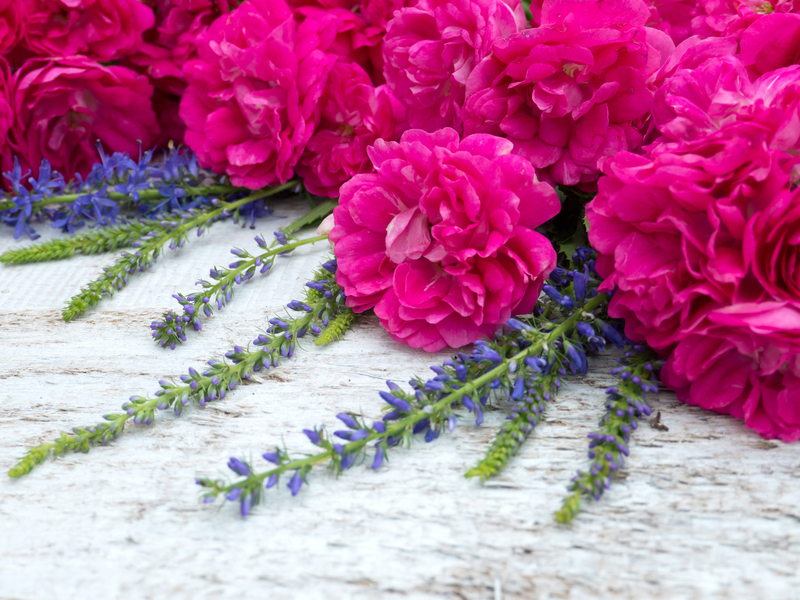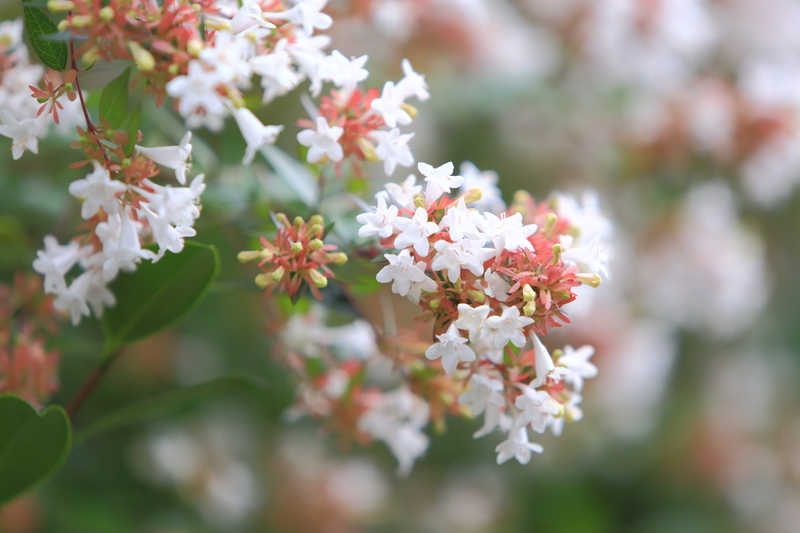9 Tips to Grow a Thriving Garden: Beginner's Guide
Posted on 25/05/2025
9 Tips to Grow a Thriving Garden: Beginner's Guide
Dreaming of lush greenery, aromatic herbs, and bountiful vegetables right outside your door? Growing a thriving garden is not only rewarding but also therapeutic. Whether you live in the city or countryside, cultivating your own green space is simpler than you think. In this comprehensive Beginner's Guide, we'll share 9 essential gardening tips designed to help you nurture a flourishing garden, no matter your space or skill level.
Why Start Your Own Garden?
Embarking on a gardening journey isn't just about beautifying your surroundings. It's about fostering a connection with nature, promoting sustainability, and enjoying fresher produce. More so, studies show that gardening relieves stress and boosts well-being. If you've ever wondered how to start a garden, these gardening basics for beginners will set you up for success.

1. Choose the Right Location
Location is the foundation of a thriving garden. Plants need the right mix of sunlight, shade, air circulation, and protection from harsh winds or too much rain. Here's what to consider:
- Sunlight: Most vegetables and flowers require at least 6-8 hours of direct sun daily. Observe your yard at different times to track the sun's path.
- Accessibility: Plant closer to your kitchen or frequently used doors, so you're more likely to tend to your plants and harvest your produce.
- Soil Drainage: Avoid low areas with standing water since roots can rot. A slope or raised bed can help.
Pro Tip: Container Gardening
If space or sunlight is limited, try container gardening. You can move pots to chase the sun and grow anything from tomatoes to herbs.
2. Assess and Enrich Your Soil
The soil is every gardener's foundation. Its quality determines whether your plants thrive or merely survive. For the best results:
- Test your soil: Use an at-home kit or consult your local extension office for a soil test. Learn your soil's pH and nutrient content.
- Amend as needed: If soil is too sandy or hard, add organic matter like compost, aged manure, or peat moss to improve fertility and texture.
- Mulch: Apply a layer of organic mulch to retain moisture, regulate temperature, and prevent weed growth.
Organic vs. Synthetic Fertilizers
Organic fertilizers (compost, manure, bone meal) nourish the soil and foster natural soil life. For beginners aiming for a healthy, sustainable garden, organic feeding is ideal.
3. Select the Right Plants for Your Zone
Choosing plants that naturally thrive in your USDA hardiness zone or local climate drastically boosts your odds for success. Consider the following:
- Know your zone: Find your area's hardiness zone online or at your local garden center.
- Start easy: Some beginner-friendly plants include lettuce, radishes, marigolds, and sunflowers.
- Mix it up: Combine annuals (one-season plants) and perennials (return year after year) for continuous color and harvests.
Companion Planting
Companion planting--pairing certain crops together--can deter pests and promote faster growth. For example, basil helps tomatoes thrive, while marigolds keep away harmful insects.
4. Learn the Basics of Watering
Proper watering is a cornerstone of any flourishing garden. Both overwatering and underwatering can harm your plants. Keep these points in mind:
- Water early: Mornings are best, reducing evaporation and preventing diseases that thrive in moisture.
- Deep, infrequent watering: Rather than light daily sprinkles, soak your soil less often but deeply to train roots to grow down.
- Check soil moisture: Stick your finger 1-2 inches into the soil--if it's dry, it's time to water.
Tip: Drip Irrigation
Install a simple drip irrigation system or soaker hoses to save water and encourage robust root growth.
5. Practice Proper Plant Spacing
Many beginners tend to overcrowd their plants, stunting their growth. Each plant species has its own space needs:
- Follow seed packet instructions: Check for recommended spacing before planting.
- Thinning: If seedlings are too close, thin them by carefully removing some to allow the rest to thrive.
- Good air circulation: Proper spacing also reduces disease risk.
Maximizing Small Spaces
Try vertical gardening with trellises or stackable planters to grow more in less space.
6. Feed Your Plants the Right Way
Just like us, plants need regular meals! A steady diet of nutrients keeps them healthy and more productive:
- Organic feeders: Compost tea, worm castings, or fish emulsion are gentle and effective for beginners.
- Time your fertilizing: Feed your plants according to their growth stage: more during the flowering/fruiting stage, and less during dormancy.
- Avoid over-fertilizing: Too much fertilizer can "burn" plant roots or encourage excessive leafy growth with less fruit.
Homemade Plant Foods
Consider making your own compost to recycle kitchen scraps and yard waste--a sustainable way to enrich your garden soil.
7. Monitor for Pests and Diseases
Nothing derails a thriving garden faster than pests or disease. Thankfully, a proactive approach makes a big difference:
- Inspect regularly: Check the undersides of leaves for insects or discoloration.
- Encourage beneficial bugs: Ladybugs, bees, and lacewings help control pests and pollinate flowers.
- Use natural solutions: Neem oil, insecticidal soap, or a simple blast of water can deter many pests.
- Remove sick plants: Uproot and dispose of infected plants quickly to prevent spreading.
Creating a Healthy Ecosystem
A diverse garden with many plant varieties and habitats invites helpful wildlife and keeps the balance in check.
8. Keep Up with Weeding and Maintenance
Weeds compete with your plants for light, water, and nutrients. Staying on top of maintenance will help your garden reach its full potential:
- Weed regularly: Pull weeds early, before they flower and drop seeds.
- Mulch: A thick layer of mulch can suppress weeds naturally.
- Prune: Trim back dead or diseased branches to stimulate healthy growth.
- Stakes and supports: Support tall plants to protect them from wind or heavy fruit pulling them down.
Staying Organized
Use garden journals or plant markers to keep track of what you've planted where, watering routines, and fertilizing schedules.
9. Harvest and Enjoy Your Bounty
Few experiences match the thrill of harvesting fresh produce from your own garden! Here are some final tips to make the most of your thriving green space:
- Harvest frequently: Picking fruits, veggies, and herbs stimulates the plant to produce more.
- Handle with care: Use sharp scissors or pruners to avoid damaging plants.
- Share the surplus: If you're blessed with extra, share the joy with neighbors or local food pantries.
Preserving the Harvest
Learn simple ways to preserve your bounty--such as drying herbs, pickling cucumbers, or making jams and sauces for year-round enjoyment.

Bonus: Keep Learning and Experimenting
Every garden and every season brings new lessons. Don't be discouraged by setbacks. Keep experimenting, researching new vegetables or flowers to try, and celebrate every success--big or small.
- Join a community: Online forums, local gardening clubs, and workshops are great for support and ideas.
- Document progress: Take before-and-after photos, journal your experience, and track which plants do best in your space.
Frequently Asked Questions on Starting a Thriving Garden
What is the best time of year to start a garden?
Spring is the most common time to start planting, but cool-weather crops like kale and radishes can be sown in fall or late summer in many regions.
How much time does a beginner garden require?
Expect to spend a few hours each week on watering, weeding, and monitoring your plants. Once established, gardening becomes a pleasurable routine.
Do I need a lot of space to garden?
No! Many small space gardening options--including vertical gardening, container planting, and window boxes--allow you to grow a surprisingly productive garden almost anywhere.
Conclusion: Start Your Gardening Adventure Today
With the right knowledge, a dash of patience, and these 9 tips for a flourishing garden, you can transform any space--big or small--into a thriving oasis. From soil preparation and plant selection to mindful maintenance and joyful harvesting, gardening can fit your lifestyle and bring immense satisfaction. Begin your garden journey today with these essential steps and watch your green thumb grow!
Your Turn!
What are your biggest questions or successes in starting a garden? Share your gardening stories or tips below and join the growing community of new gardeners!

